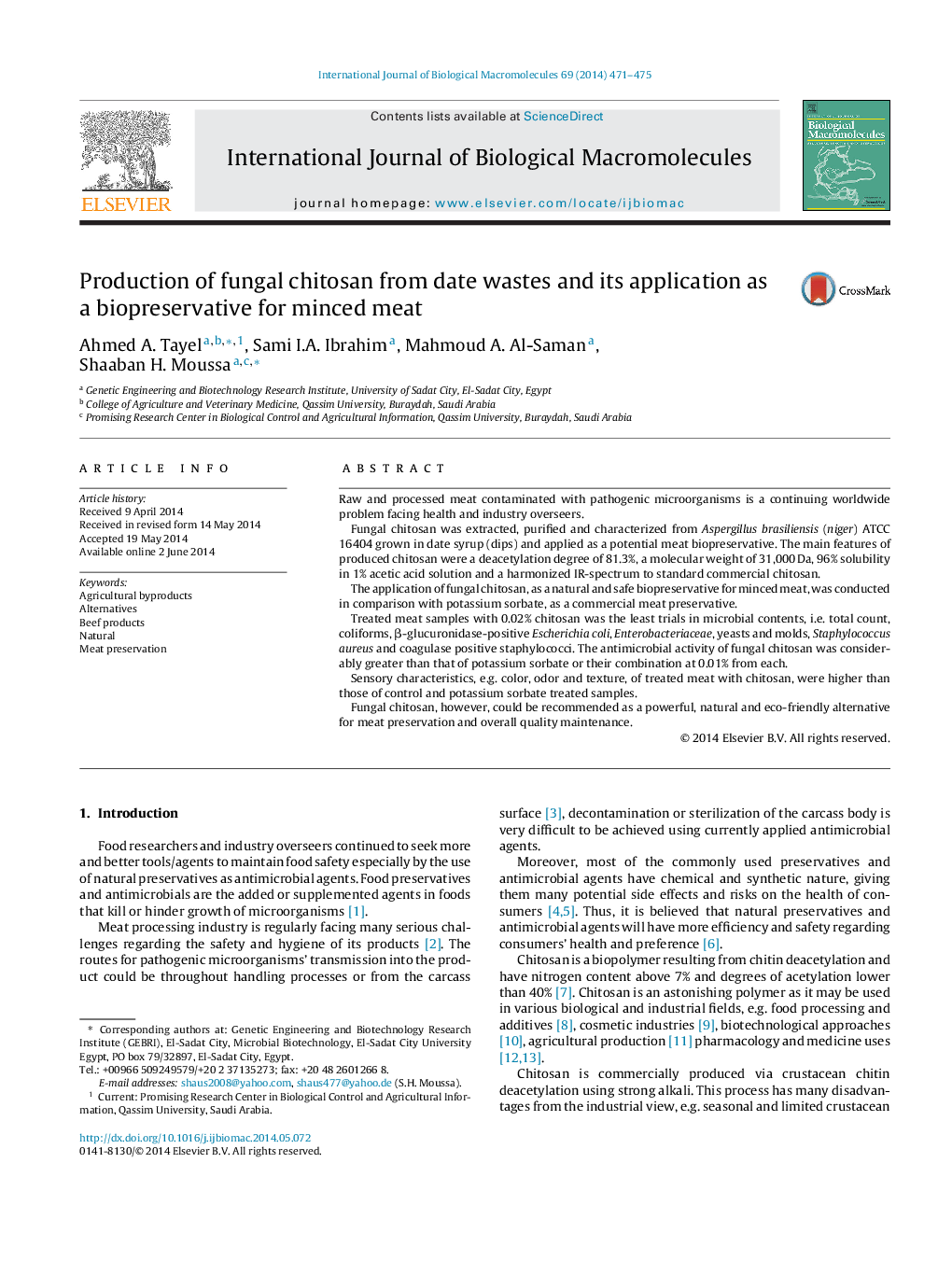| Article ID | Journal | Published Year | Pages | File Type |
|---|---|---|---|---|
| 1986725 | International Journal of Biological Macromolecules | 2014 | 5 Pages |
Raw and processed meat contaminated with pathogenic microorganisms is a continuing worldwide problem facing health and industry overseers.Fungal chitosan was extracted, purified and characterized from Aspergillus brasiliensis (niger) ATCC 16404 grown in date syrup (dips) and applied as a potential meat biopreservative. The main features of produced chitosan were a deacetylation degree of 81.3%, a molecular weight of 31,000 Da, 96% solubility in 1% acetic acid solution and a harmonized IR-spectrum to standard commercial chitosan.The application of fungal chitosan, as a natural and safe biopreservative for minced meat, was conducted in comparison with potassium sorbate, as a commercial meat preservative.Treated meat samples with 0.02% chitosan was the least trials in microbial contents, i.e. total count, coliforms, β-glucuronidase-positive Escherichia coli, Enterobacteriaceae, yeasts and molds, Staphylococcus aureus and coagulase positive staphylococci. The antimicrobial activity of fungal chitosan was considerably greater than that of potassium sorbate or their combination at 0.01% from each.Sensory characteristics, e.g. color, odor and texture, of treated meat with chitosan, were higher than those of control and potassium sorbate treated samples.Fungal chitosan, however, could be recommended as a powerful, natural and eco-friendly alternative for meat preservation and overall quality maintenance.
